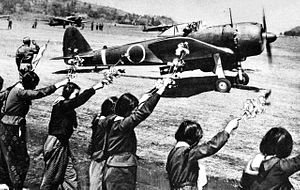In a recent trio of posts at the blog From Balloons to Drones, Justin Pyke (a Canadian scholar working on military and intelligence history) tracked how Western intelligence evaluated Japanese aviation technology during the interwar period. Interesting in and of itself, the posts also hold some valuable lessons on how to think about the progress of China’s aviation industry.
Pyke dismisses the older interpretation of Western unpreparedness, which posited that racist American attitudes towards Japan had resulted in a fatal underestimation of Japanese capabilities. Instead, Pyke argues that Japanese counter-intelligence activities, along with a general closing of Japanese society, made it much more difficult for Americans to accurately assess the capabilities of the Imperial Japanese Army (IJA) and Imperial Japanese Navy (IJN). Consequently, as the Japanese government and military tightened control over information on aviation, the value supplied by U.S. intelligence efforts declined.
Throughout the 1920s, Japan consistently sought to acquire the most modern aircraft from foreign developers, as well as to acquire as much information as possible about production and machine tooling. The Japanese aviation industry as a whole suffered from a paucity of trained engineers, and a relatively weak economy reduced the resources that the Japanese could devote to pilot training. Nevertheless, Japan remained largely open to foreign assessment of its aviation progress.
In the 1930s, information about the Japanese aviation industry began to dry up, just as the industry itself came into its own. Although still dependent on foreign tooling and manufacture, Japanese designers were creating innovative, effective new aircraft by the early 1930s. Pilot quality improved, although Western assessments disagreed on how effective the pilots had become. The IJA and IJN become considerably less forthcoming regarding information about their programs and assets. Altogether, Western analysis correctly identified Japan’s strategic focus on aviation, while increasingly getting the details wrong.
The beginning of the Sino-Japanese War in 1937 dramatically curtailed available information about Japanese aviation. Although knowledge of Japan’s industrial shortcomings remained more or less accurate, U.S. analysts (mostly using open source materials) increasingly underrated and misstated Japanese technical innovation and tactical training. Motivated bias and a dearth of information led U.S. analysts to regress to pat assessments of Japanese cultural and racial backwardness. Pyke concludes that the Western appreciation of Japan’s industrial weakness was accurate and consequential, but that analysis of the tactical effectiveness of Japanese aircraft and aviators was lethally wrong.
The story has some clear lessons for how the United States can track and evaluate technical progress in China’s defense industrial base. The first is that information access matters; Japan successfully took advantage of a relatively open information environment in the 1920s before shutting down access (and to a degree, influence) in the 1930s. When war came, Japanese aviation saw great early success, but then quickly fell behind its more prosperous, open Western foes.
Of course, today’s information environment differs dramatically from that of the 1930s. Even to the extent that China seeks to prevent details of its military aviation programs from reaching the West, it is impossible to keep a wrap on projects like the J-20. Too many aviation enthusiasts in the United States and China have too many camera phones and too many twitter accounts to successfully keep big military secrets. That said, China’s access to information about the technical frontiers of U.S. aviation (some ill-gotten) is undoubtedly much greater than the converse.
The second lesson is that, in information scarce situations, biases of various kinds can take the place of missing information. Fortunately, the kind of race-based assessment that was part of the U.S. view towards Japan in the 1930s is no longer as prevalent. Nevertheless, it would hardly be surprising to see U.S. intelligence (consciously or unconsciously) fill in missing information with preexisting but outdated beliefs about Chinese military effectiveness and technological aptitude.

































